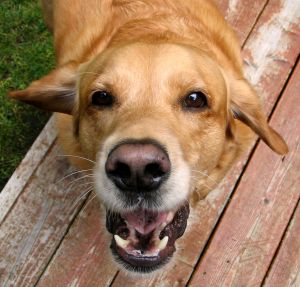 Last month – February – was National Pet Dental Health – but that likely comes as a surprise to you. Don’t worry. You’re not alone. That’s because dental care for our pets isn’t necessarily top-dog in terms of what’s on our minds. But it should be. According to the American Veterinary Dental Society, more than 80 percent of dogs, and 70 percent of cats, develop gum disease by the time they turn three. This is an alarming number when considering that as owners we can significantly lower this statistic by implementing an at-home dental care routine. But how exactly do we go about keeping the mouths of our beloved pets clean?
Last month – February – was National Pet Dental Health – but that likely comes as a surprise to you. Don’t worry. You’re not alone. That’s because dental care for our pets isn’t necessarily top-dog in terms of what’s on our minds. But it should be. According to the American Veterinary Dental Society, more than 80 percent of dogs, and 70 percent of cats, develop gum disease by the time they turn three. This is an alarming number when considering that as owners we can significantly lower this statistic by implementing an at-home dental care routine. But how exactly do we go about keeping the mouths of our beloved pets clean?
First it’s important to know the signs of oral disease.
The first sign that your pet is suffering from some form of oral disease is her breath. If your pet’s breath is minty fresh, you’re extremely lucky … and probably suffer from some affliction that causes everything you smell to seem like it’s minty fresh. In other words, a dog or cat’s breath isn’t meant to smell like yours after your nightly brushing. But it shouldn’t be overwhelmingly offensive either. If your pet’s breath is potent in stench – to the point that a yawn causes you to pinch your nose – it’s time to see your vet.
Other signs of oral disease include:
-
Inflamed gums
-
Tumors in the gums
-
Cysts under the tongue
-
Loose teeth
-
Excessive drooling
Some of these signs require you to do more than take a sniff test. Once a week you should lift your pet’s lips and check out her gums and teeth. A healthy set of choppers will have pink gums (not white or red), and should not be swollen. You shouldn’t see any brownish tartar on the teeth, either.
Dog and cat teeth cleaning
Having a professional clean your dog or cat’s teeth is extremely expensive, and pretty traumatic for you and your pet, as typically the pet has to be put under some form of anesthesia. Sometimes this approach is unavoidable, if a pet’s teeth are so bad that there are no other options. But, if you’ve caught your dog or cat’s oral issues early on, you can avoid this event by incorporating an at-home dental routine.
While dogs and cats react differently to various stimuli, approaching a brushing for either is rather similar. The goal is to get the animal to believe that the brushing is a fun activity. This includes bringing treats along, and exposing your pet to brushing in small doses, until she’s ready for a full session.
Many folks use a pet-specific toothbrush to clean their pet’s teeth, while others prefer the flexibility and closeness afforded to them by a rubber slip that goes right over their finger. Either approach is fine, but be consistent with the tool you use.
When brushing your pet’s teeth, remember that small victories are better than none, so for the first week or so, if you can successfully touch brush to tooth, even for one second, consider that a win (and treat your pet!).
Eventually you’ll be able to lengthen the brushing sessions, but never rush it. Forcing your pet to endure a brushing will set you back weeks, if not months.
When you do get to brush, keep in mind that the side of the tooth that touches the cheek usually has the most tartar. By using a nice downward stroke you can help remove that build-up. The insides of your pet’s teeth often suffer the least amount of tartar (their tongues help clean that area), so don’t fight it if your pet is adverse to the brush touching those areas.
When you and your pet have established a good routine for brushing, try to do it 2 – 3 times per week. By doing so, you’ll increase your pet’s chances of avoiding various oral diseases, including:
-
Periodontal disease
-
Gingivitis
-
Halitosis
-
Swollen gums
-
Proliferating gum disease
-
Mouth tumors
-
Salivary cysts
-
Canine distemper teeth
Beyond brushing
Beyond brushing, you can also help improve your pet’s dental care through diet and toys. Dogs love to chew, and by giving them a chew toy, you can help strengthen their teeth and massage their gums. This can help to scrape away soft tartar.
Diets are also helpful for improving a pet’s teeth. Specially formulated dry food can slow down the formation of plaque and tartar. Dry food, in general, is seen as an aide toward battling build-up, as is not feeding your pets any table scraps.
And, when in doubt, visit your vet to get tips and advice on products, food, and at-home routines that can help you and your pet avoid a pricy, and scary, professional cleaning.





